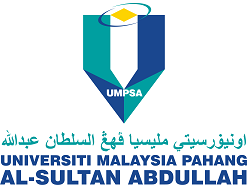Effect of Watershed Subdivision and Antecedent Moisture Condition on HEC-HMS Model Performance in the Maha Oya Basin, Sri Lanka
DOI:
https://doi.org/10.15282/ijets.v5i2.1391Abstract
In large scale watersheds, the accuracy level of medium and low flow simulation could decrease due to uncertainty of the watershed parameters. In hydrological modeling, sub division of watershed would help to better implement decision-making related to water resources management, which relies heavily on hydrologic simulations. However, an important concern will be raised over problems associated with lumped hydrologic models with watershed subdivision broadly applied in so called semi-distributed hydrological models since scale issues would significantly affect model performance, and thus, lead to dramatic variations in simulation results. It is important to achieve the appropriate level of sub divisions (discretization). Further at times, the resulting flood level can be much higher than expected, due to storm events. This is unprecedented and the reason may be due to saturated moisture level in the soil layer. Therefore, the Antecedent Moisture Condition (AMC) is an important parameter to be investigated to check the accuracy and possibility of further improvement of the model. In this paper, Hydrologic Modeling System (HEC-HMS) was used for continuous simulation to investigate the effect of watershed subdivision on the model performance. Further, the antecedent moisture condition (AMC) events were used to study the impacts of AMC on the model performance. Badalgama watershed is selected as study area in Maha Oya Basin in Sri Lanka. Spatial extents of Maha Oya Basin and Badalgama watershed are 1553 km² and 1272 km², respectively. Four rainfall stations and one river gauging station were selected in Badalgama watershed. Nash–Sutcliffe (NASH) coefficient and Mean Ratio of Absolute Error (MRAE) were selected as objective functions for modeling. The main focus was on MRAE, as the objective function, but Nash coefficient was also estimated and checked for comparison. In particular, results show that generally the accuracy of the model decreased from six to sixteen sub divisions, which shows that variation in the total number of sub watersheds had very little effect on runoff hydrographs and improvements generally disappear when the number of subdivisions reaches a relatively small number, approximately between six and sixteen sub-watersheds. The accuracy of the model with AMC-III increased by 12.04% when compared to AMC-II hence showing more reliable results as compared with AMC-II condition. In this research, recession method was used for base flow estimation, which led to mass balance error exceeding 20%. Therefore it is recommended that for improving the accuracy, linear reservoir method for base flow estimation should be used in order to conserve the water balance and AMC-III should be used for fully saturated soil instead of AMC-II.


